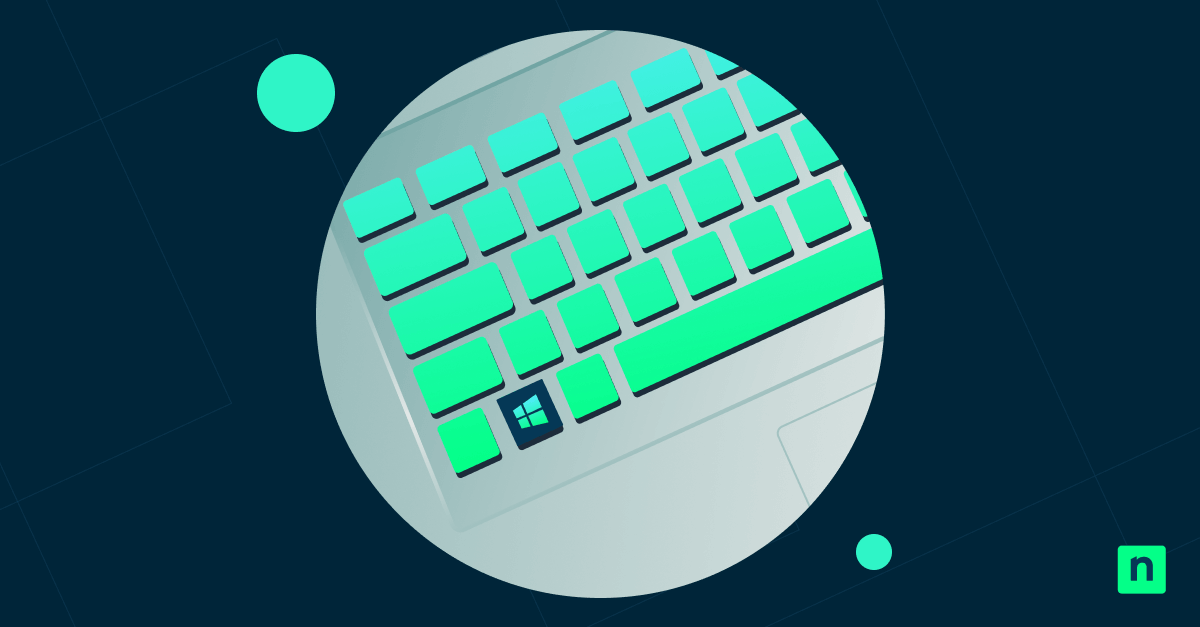By default, the primary mouse button is the left button, which is used for selecting, dragging, and interacting with items on the screen. Conversely, the right button is the secondary mouse button for accessing context menus. However, this setup is not always accommodating for non-right-handed people.
To accommodate everyone’s needs, Windows allows users to switch the functions of the two mouse buttons, helping them feel more comfortable using a mouse with their PC. Keep reading to learn how to change the primary mouse button in Windows 11 using various methods, including GUI tools, the Registry Editor, and PowerShell.
How to change the primary mouse button in Windows 11
Depending on your environment and IT knowledge, Windows 11 offers multiple methods for switching the primary and secondary mouse buttons per user.
Note: Changing the primary mouse button should only affect mice, touchpad buttons, trackballs, and any connected external pointing devices that use standard HID protocols.
Method 1: Change the primary mouse button via Settings (GUI)
Configuring this feature via the Settings app is recommended for end users and individuals trying to customize personal or shared home devices. This is a user-friendly method that requires no technical knowledge or elevated privileges. The changes apply immediately, so rebooting is not required.
- Open the Settings app. Press Windows key + I or manually find it using the Start menu search bar.
- On the left pane, select Bluetooth & devices.
- On the right pane, click Mouse.
- Select the Primary mouse button drop-down menu and choose:
- Left = For right-handed use (default)
- Right = For left-handed use
Method 2: Change the primary mouse button via Control Panel (Alternative GUI)
For users who prefer the legacy UI, using the Control Panel is a viable method that renders the same result as using the Settings app. It offers quick access to the configuration when the Settings app is inaccessible and works on all Windows versions.
- Open Mouse Properties in the Control Panel. Press Windows key + R, type “main.cpl,” and press Enter.
- In the Buttons tab, under Button configuration, find the Switch primary and secondary buttons option and:
- Check the box = Make the right button the primary mouse button
- Uncheck the box = Keep the left button as the primary mouse button (default)
- Click OK.
Method 3: Change the primary mouse button via Registry Editor
IT professionals and advanced users can use the Registry Editor to configure this setting and apply it at scale via login scripts or user profile defaults. This method enables scripting and automation for admins managing multiple accounts or devices. It is ideal for kiosk, classroom, and lab setups, as well as non-GPO environments.
⚠️ Note: Exercise caution while editing the registry, as errors can affect system behavior. It is recommended that you back up the registry before proceeding. Admin rights are required when scripting registry edits for system-wide enforcement.
- Open the Registry Editor. Press Windows key + R, type “regedit,” and hit Enter.
- On the left pane, follow this path:
HKEY_CURRENT_USER\Control Panel\Mouse
- On the right pane of the Mouse key, double-click the SwapMouseButton REG_SZ.
- In the Edit String dialog box, under Value data, type:
- 0 = Make the left button the primary mouse button (default)
- 1 = Make the right button the primary mouse button
- Click OK.
- Restart your computer or sign out and back in to apply the changes.
Method 4: Change the primary mouse button via PowerShell
Using PowerShell is recommended for system administrators concerned with automation and bulk deployment. This method allows IT professionals to integrate the setting in enterprise environments using scripts or Intune deployment.
Note: Admin rights are required when running the scripts for other users on the system.
- Open a PowerShell session. Press Windows key + R, type “powershell,” and hit Enter.
- Copy and paste the appropriate command for the action you want to take before hitting Enter:
- Set the left button as the primary mouse button (default):
Set-ItemProperty -Path “HKCU:\Control Panel\Mouse” -Name “SwapMouseButtons” -Value “0”
- Set the right button as the primary mouse button:
Set-ItemProperty -Path “HKCU:\Control Panel\Mouse” -Name “SwapMouseButtons” -Value “1”
- Restart your computer or sign out and back in to apply the changes.
Why change the primary mouse button?
The primary mouse button determines which mouse button, usually the left, can select and interact with objects on the screen. Changing this setting designates the right button as the main action button, which allows admins to:
Accommodate left-handed or ambidextrous users
Most computer mice are designed to accommodate right-handed users. It means the primary mouse button is the one that’s easily clickable using the right-pointing finger, which is the left button.
However, this default configuration can cause discomfort and reduce efficiency for left-handed users, especially during extended use. Switching the primary mouse button can help them operate the mouse more naturally using their dominant hand. Additionally, ambidextrous users can benefit from this switch by alternating hand usage throughout the day to reduce the risk of repetitive strain injuries.
Meet accessibility needs
Users with limited mobility or temporary injuries may find clicking or controlling the default primary mouse button difficult. Reassigning the primary mouse button allows them to use the hand or finger with better motor function for screen interactions.
Meet ergonomic requirements
Ergonomic accessories like vertical mice and trackballs are often designed with different assumptions about hand orientation and button use. Reconfiguring the primary mouse button can help users tailor mouse input to improve comfort, reduce strain, and minimize injuries from repetitive motions.
Standardize behavior across shared devices
Standardizing mouse behavior based on user profiles ensures a more predictable and comfortable experience in multi-user environments like schools, public libraries, and corporate labs. When each user retains their own mouse configuration, it can offer greater inclusivity without requiring manual adjustments for every session.
Additional considerations when changing the primary mouse button
Switching the primary mouse button from the default left button to the right button can have varying impacts on different device types, user profile configurations, and hardware environments. Consider the following points to ensure you achieve the behavior you expect from the setting:
Touchscreen devices
This setting does not affect tap-to-click behavior on touch-only devices, as single taps on touchscreens are always treated as a left click by default. However, it can affect pointing devices in hybrid environments, such as 2-in-1 laptops.
Roaming profiles
The primary mouse button setting is stored in the user profile. So, in environments with roaming profiles, this setting moves with the user, and no additional configurations are needed when switching devices.
Multi-mouse setups
Windows does not support assigning different primary mouse button settings per device. The change will apply globally to all pointing devices connected to the system under the same user profile, including mice, touchpads, and trackballs.
Default profile configuration
This setting applies only to the current user. If you want it to apply across newly created accounts, it must be configured in the default user profile by modifying the SwapMouseButton REG_SZ under HKEY_USERS\.DEFAULT\Control Panel\Mouse. Note that this will not affect existing user profiles.
Unexpected change of the mouse setting
If your mouse’s primary button keeps changing or resetting intermittently, it may be due to conflicts with third-party mouse software, login scripts, group policies, or user profile syncing. In some cases, accessibility tools or manually edited registry settings may also trigger unexpected behavior. It’s essential to check startup applications, registry values, and active group policies to identify and eliminate the source of conflict.
Making mouse settings work for everyone
Switching the primary mouse button in Windows 11 is a small but meaningful customization that can improve accessibility, comfort, and user experience. It can support individual preferences and enterprise requirements through various configuration methods, from GUI tools to registry edits and scripts. Just make sure to choose the right method and understand its implications to ensure a more inclusive and predictable experience for all users.
Quick-Start Guide
Here’s how to change the primary mouse button in Windows 11:
1. Open Windows Settings
2. Go to Bluetooth & Devices
3. Click on “Mouse”
4. Look for an option to change the “Primary mouse button”
5. Select either “Left” or “Right” to switch the primary button
Here’s a step-by-step guide:
1. Press the Windows key
2. Type “Mouse settings”
3. Select “Mouse settings” from the results
4. In the Primary button section, choose whether you want the left or right button to be the primary button
NinjaOne’s documentation confirms that this setting is a global change that affects all mice connected to the system. If you have multiple devices or specific requirements, you might need to use additional software or system tools to customize mouse button settings for individual devices.








